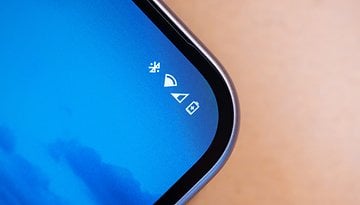How Huawei and Honor's diverging strategies led to two nearly identical phones


The Honor 9 and the Huawei P10 have most of their key technical specs in common. The two phones share the same Kirin 960 processor, 4 GB of RAM, 64 GB of internal storage, 3,200 mAh battery capacity, 5.15-inch IPS LCD display and Android Nougat. Given that the Honor brand is owned by Huawei, why would the companies release two products with nearly identical specs? And why aren’t they officially available in the US? To get to the bottom of this mystery, we need a bit of background on Honor and Huawei to help us understand.
How Honor began
Honor came onto the scene as a sub-brand of Huawei in 2013. With this new brand, Huawei intended to compete with affordable brands in China. Honor continues to take on competitors like Xiaomi in that segment to this day. It began its international expansion in 2014, and by mid-2015, Honor had expanded to over 70 countries.
Expansion to the US market
Honor landed in the US at the beginning of 2016 with the unlocked Honor 5X, which was initially only available online, then later also at select Best Buy stores. Honor doesn’t sell through carriers, which still control the majority of US smartphone sales, despite the growing popularity of unlocked phones. Since then, Honor has brought the Honor 6X and Honor 8 to the American market, but as of now, there are no plans to do the same for the new Honor 9 flagship. It’s possible that this was due to disappointing sales of the Honor 8 in the US.
At the moment, Huawei isn’t selling a wide range of phones in the US market, and carriers don’t seem to be keen to work with the company because of security concerns and low brand recognition. Though the Huawei Mate 9 phablet is widely available online and through brick and mortar retailers like Best Buy and Walmart, carriers aren’t selling it. At the lower end of the spectrum, you can get an AT&T pre-paid GoPhone from Walmart called the Huawei Ascend XT, but that’s as close to a carrier device as Huawei can get in the US right now - and it certainly isn’t the premium device Huawei wants to be known for.
A dual brand strategy
According to George Zhao, president of Honor, Huawei has a dual brand strategy. Huawei has a traditional retail model, marketing premium products and selling them in shops. Honor has an entirely different model. As mentioned before, it focuses on affordable products for a different target consumer. Honor sells devices primarily online. It promotes its devices on the internet as well, nurturing a fan community of those who are “young at heart” through social media.
The two brands also operate differently, and to a certain extent, independently. You can see from the outside that Honor obviously has its own marketing and sales, but behind the scenes, it also has its own R&D. What it shares with Huawei is certain technical aspects, like the Kirin processors. Besides that though, the two brands couldn’t be more different, and they work in concert with each other for a coherent overall strategy. This dual brand strategy has only become more clear over time despite some confusing naming schemes in the past. Even as recently as 2016, Huawei marketed the Honor 7i for the Chinese market as the Huawei ShotX internationally due to Huawei’s wider name recognition.
Conclusion
Huawei is the traditional, premium brand and Honor is the young, affordable brand. When you take these two parts of the strategy into account, it makes sense that the Honor 9 and Huawei P10 were both released, in spite of being nearly identical in terms of specs.
The two groups of consumers that Huawei and Honor target with these devices are distinct, and the devices will be evaluated in these two different contexts. In addition to having different brands for different consumer segments, there is a divergence in design with these devices: the Honor 9 is shiny, colorful and fun, while the P10 has a more subdued metal back. The launch price of the Huawei P10, about $700 (£550), was nearly $200 higher than the around $500 (£380) Honor 9, which makes sense given Honor’s emphasis on affordability and Huawei’s premium brand positioning.
Sadly, neither phone is officially available in the US. In the carrier dominated US context, there may not be much room for these devices to compete at their price points as unlocked devices. For the prices, which equate to about $700 and $500, an unlocked Samsung Galaxy S8 or OnePlus 5 easily outshine both devices. One top-tier Huawei device that was released in the US, with Amazon Alexa, was the Huawei Mate 9. The 5.9-inch Mate 9 has sold well since it stands a better chance in the US than the P10 and Honor 9.
Why do you think the Huawei P10 was followed by the launch of the Honor 9, a very similar device?



















